Historical Abandoned Military Bases Around the World
Hashima Island, Japan
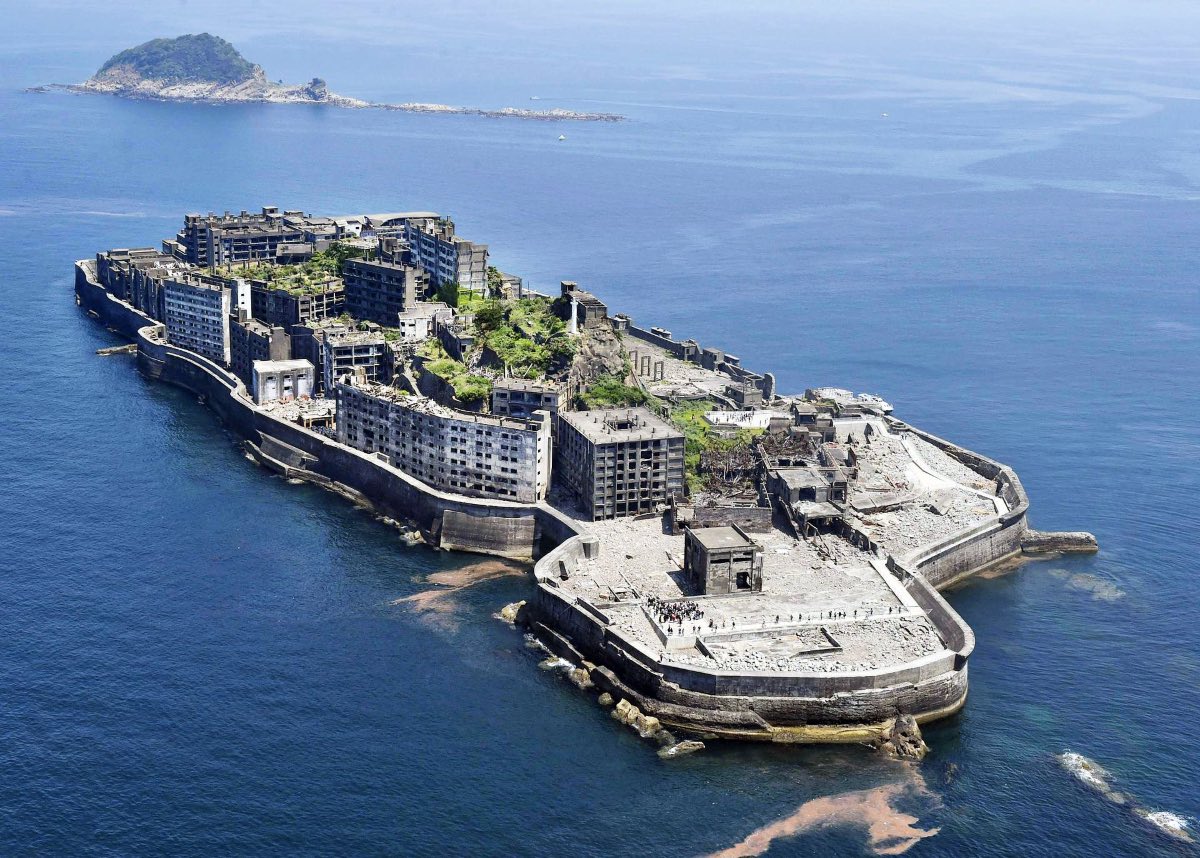
Formally known as Gunkanjima Island, this tiny piece of land has an incredible history. Believing there was a huge potential for coal deposits beneath the island, the Mitsubishi Company developed it in the early 1900s. Their prediction was correct and Gunkanjima became vital in Japan’s industrial revolution with its increasingly vast submarine coal mine. The mine required workers, so the tiny island built ten story tall buildings. It was known as “Midori nashi Shima”, or the island without green. Korean POWs were allegedly sent to Hashima and forced into slave labor in the mines during WWII. The less than one square kilometer island eventually had 6,000 residents, making it the most densely populated area in the world. The coal ran out in the early 1970s and the island was quickly abandoned. One of the coolest abandoned military bases in the world, the island remains exactly as it was left, although some green things have begun to grow.
Nekoma, North Dakota
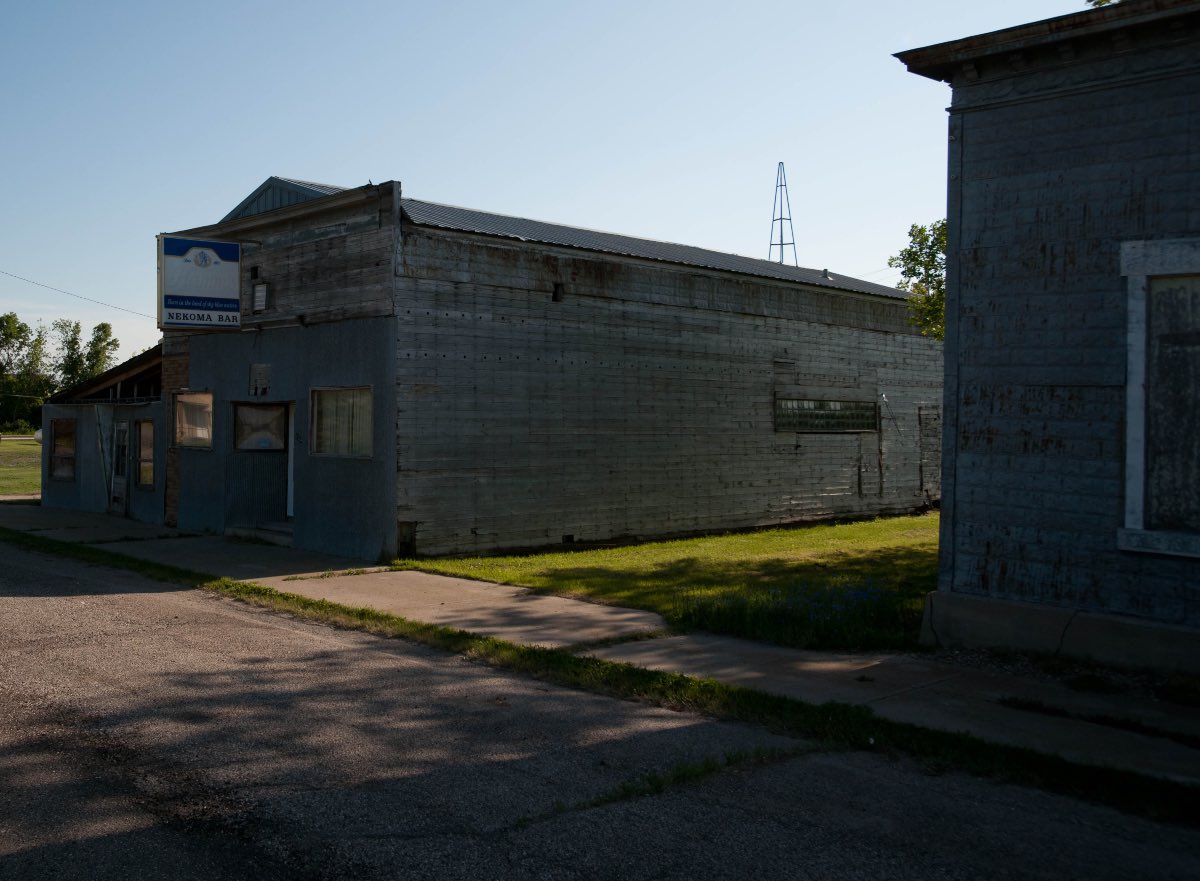
The 1950s were a time riddled with fear of nuclear demise in America. It was through that fear that the U.S> Army created the “Safeguard Program”. This program tracked incoming missiles from the enemy that was then shot down using US missiles from the ground. Located in Nekoma, North Dakota, the facility was situated so that any incoming missiles were shot down over Canada. The structure detected these threats via a massive pyramid with a squared off top. The structure contained radar dishes and a 360 degree view that could spot missiles from around 1,100 km away. The site also had a vast tunnel system which stretched over many miles. With a price tag of around six billion dollars, it was a massive failure when it was shut down and its tunnels flooded after just three days of operations. The risk of detonating nuclear warheads over our neighbor’s skies as well as general skepticism of its over-all effectiveness left Nekoma all but abandoned. It will go down as one of the most infamous abandoned military bases in history.
Titan 1 Missile Complex, Aurora, Colorado
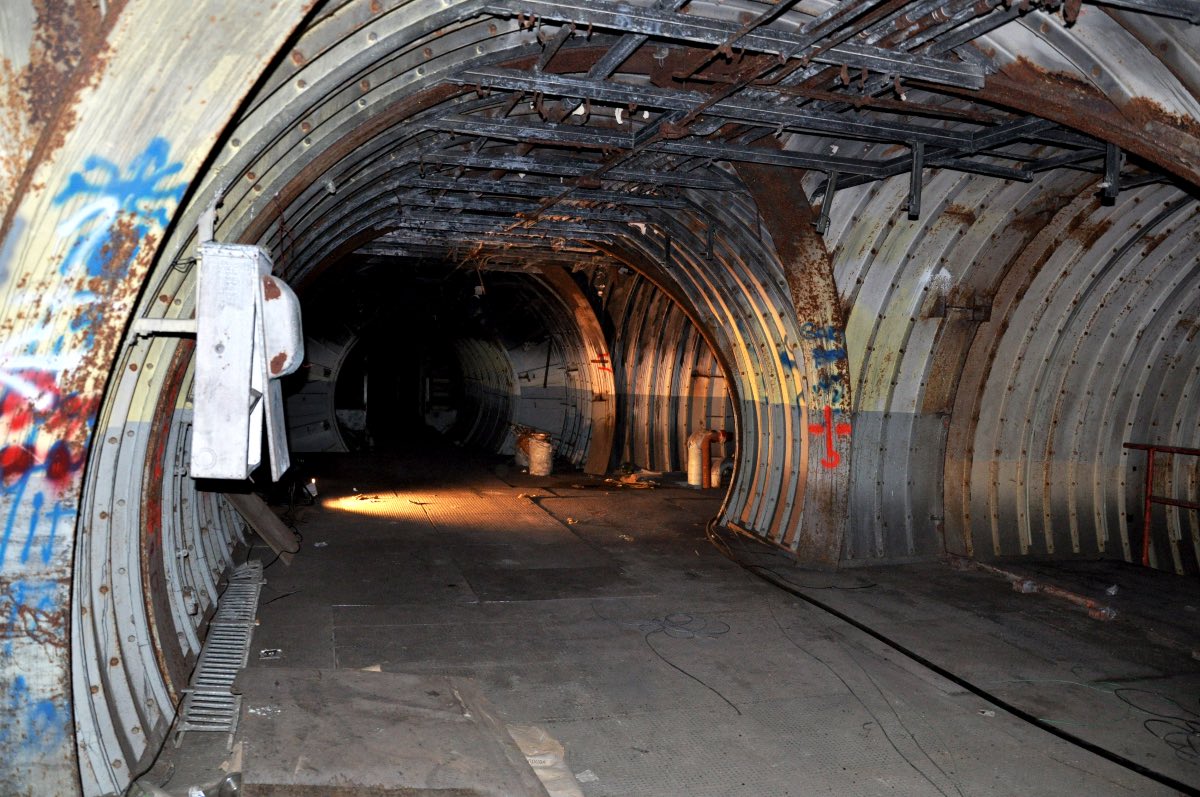
Located in the Denver, Co. area, there are six former Titan 1 Missile complexes that remain today. The Titan 1 Missile is one of the earliest intercontinental ballistic missiles (ICBM) developed by the US. It is part of a family of United States-produced rockets meant for both war and space exploration. The missiles were operational between 1962 and 1965, around 100 feet long and specifically designed to carry nuclear warheads. They were stored in these silos until the end of the Cold War and once the missiles themselves were removed, the military abandoned the complex. Surprisingly, security is relatively low at these complexes and thus have been trespassed and vandalized over the years. While you could probably make it into the complexes, the toxic contamination due to metal corrosion, waterproofing paint, and electrical equipment should be enough to deter most people from ever entering.
Zeljava Airbase, Croatia/Bosnia and Herzegovina
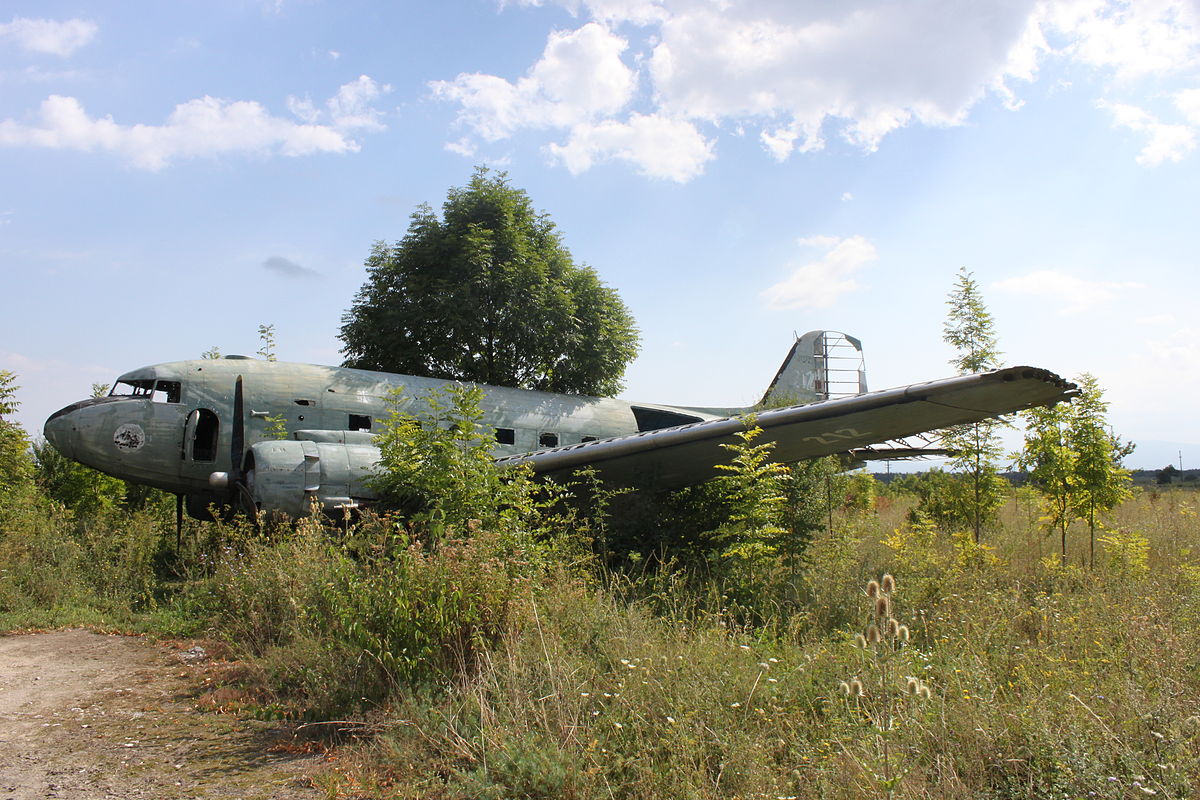
Officially known as Objekat 505, Zeljava Air Base borders Bosnia and Croatia and was Yugoslavia’s largest underground air base. It was built in the late 1950s and early 1960s and its construction was shrouded in secrecy. The underground base had four jet sized exits, could be hermetically sealed, and was designed to withstand a direct nuclear hit. Objekat 505 was meant to protect against foreign aggressors but failed to consider the possibility of issues at home. During the Yugoslavian civil war, the Yugoslavian army destroyed the base so as to disable its use by any of the factions involved in the war. The demolition was continued and completed a year later and over 50 tons of explosives were detonated. Presently, the Bosnian Federation police force use the site as a K-9 training facility for explosive retrieval due to the large amount of undetonated explosives left over from its heyday.
Ghost Ship Fleet, Suisun Bay, California.
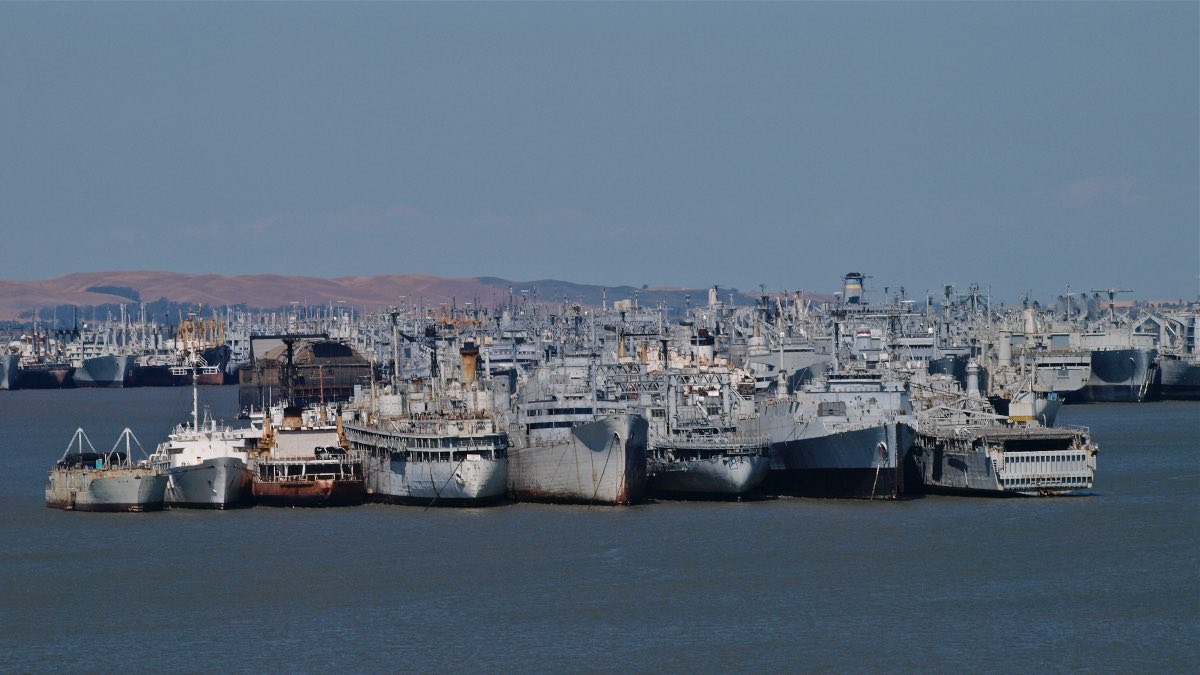
The Ghost Fleet is a name given to the Suisun Bay Reserve Fleet that sat in the northwest part of the Suisun Bay located near San Francisco beginning in 1946. The ships in the Suisun Bay are one location of ships that were part of the larger National Defense Reserve Fleet. The idea was for these ships to serve as reserve ships should they become needed in times of national emergency or national defense. At its highest, the fleet had around 2,000 ships ready for action. There were a number of notable ships in the Suisun Bay Reserve Fleet specifically, but the most famous is the USS Iowa. The USS Iowa fought in WWII and the Korean War and famously transported President Roosevelt.
Unfortunately the Ghost Fleet has created extensive environmental issues for the Suisun Bay due to the massive amount of paint peeling off the ships and into the bay. The NOAA (National Oceanic and Atmospheric Administration) studied the contamination and the US government has a plan in motion to have all of the ships removed from the bay with the obsolete ships sold for scrap. Only a few remain today and all should be gone by the end of the decade.
Maunsell Sea Forts, Thames and Mersey Estuaries, U.K.
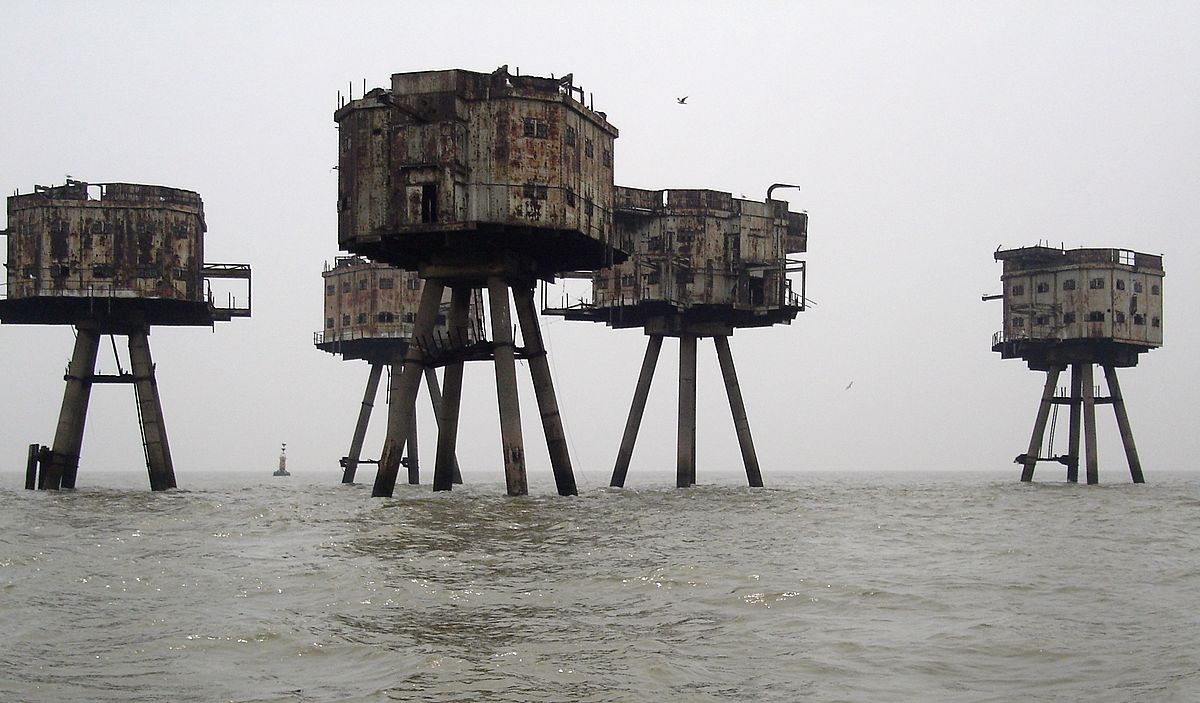
Named for the civil engineer who designed them, the Maunsell Sea Forts are strange looking circular naval forts built in the Thames estuary that were once linked by walkways. There were three separate “forts” including the Nore army fort, The Red Sands army fort, and The Shivering Sands army fort, each with its own control tower. The Nore was located the closest to the shore and is no longer standing due to severe damage in the 1950s. Red Sands is by far in the best condition, and there is ongoing support to restore it. The farthest fort from shore is Shivering Sands which stands about nine miles from shore. Interestingly, these were the original location of the pirate radio broadcast which add another layer of historical value. However, due to the condition of Shivering Sands fort, there have been plans to demolish these structures rather than restore.
Beelitz-Heilstaaten, Brandenburg, Germany
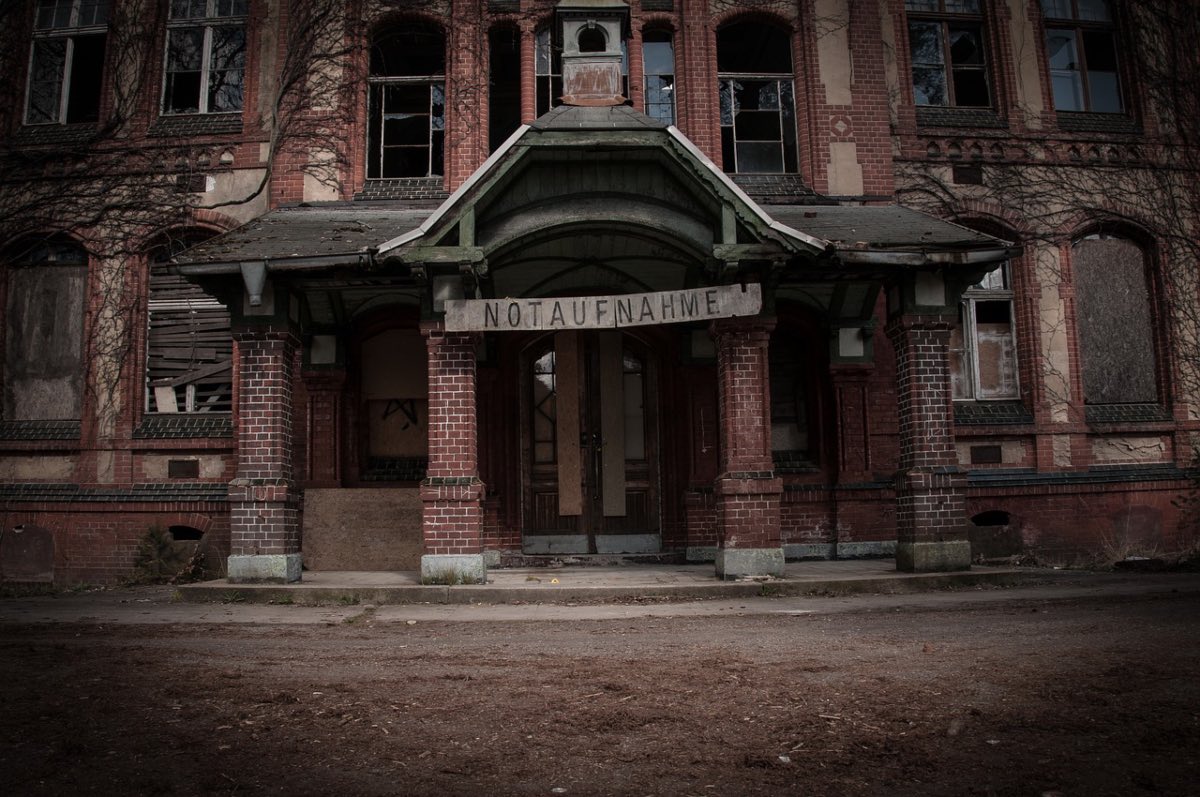
Originally built to treat patients of incurable illnesses such as tuberculosis, Beelitz-Heilstaaten is a massive building with an interesting, if not creepy past. The hospital was built just outside of Berlin between 1898 and 1930 and had sixty buildings. It was so large that a small village was built around it, including a post office, butcher and restaurant. Part of the hospital was transformed to treat injured soldiers during World War I. One such patient was a young Adolf Hitler.
Some buildings of Beelitz were bombed by the Allies during World War II, but much of the hospital remains in tact. The Soviets took control of Beelitz after the Second World War was over and it remained a military hospital until 1995. Despite attempts to privatize the large and historically important structure, the hospital remains abandoned, rotting away in the countryside. Access to the site is quite easy which has resulted in urban exploration and extensive vandalization.
Maginot Line Military Bases, Eastern France
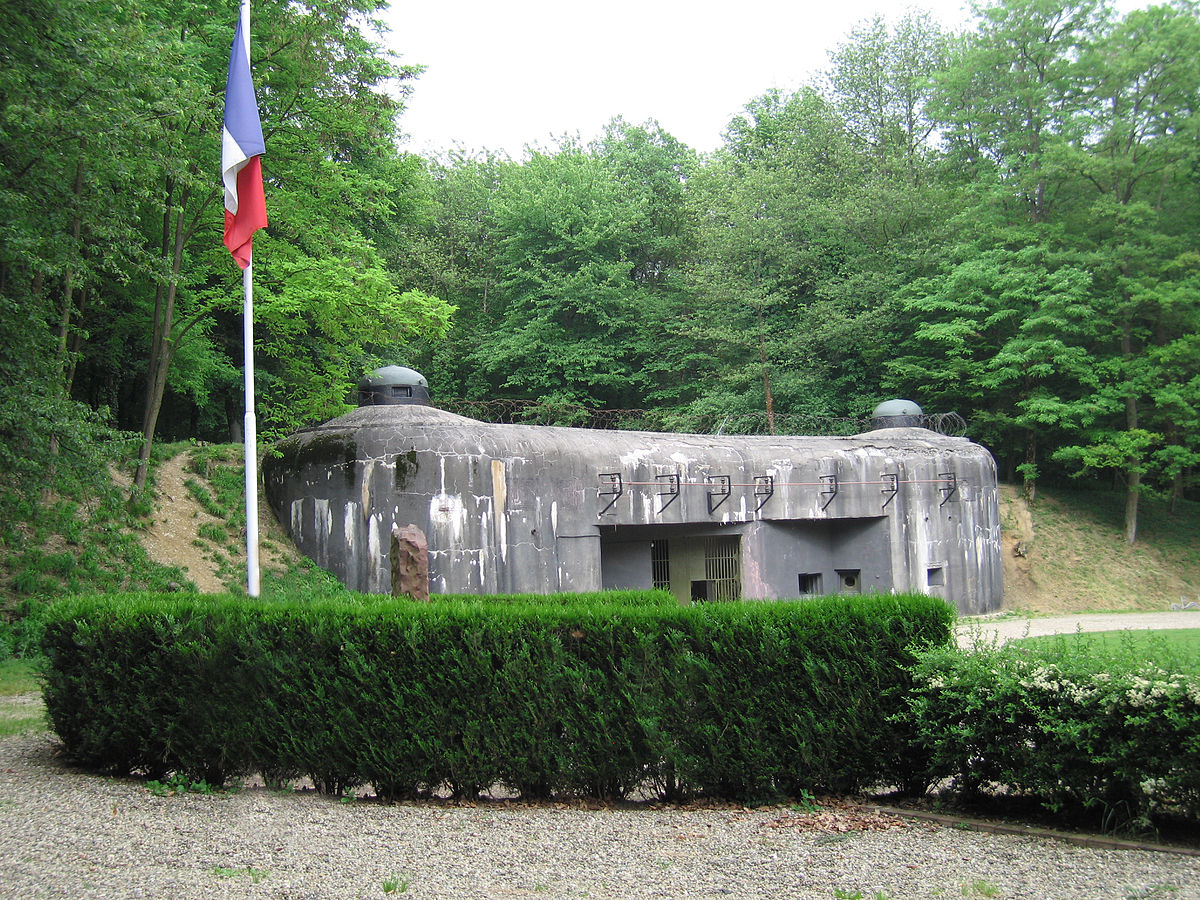
Named for the Minister of War André Maginot, France’s Maginot Line was constructed to defend against the invasion of Germany in the 1930s. André Maginot, who fought in the First World War, was also involved in the design and funding of the ambitious defense strategy. The main Line was built along the country’s border, from the La Ferté to the Rhine River, and consisted of bunkers, blockhouses and underground fortresses of varying sizes. The Maginot Line did not hold the German’s back as they’d hoped and they were invaded via Belgium (where the weakest fortresses were located) in 1940. The strategy is historically regarded as a massive defensive failure, even having the name become synonymous for a “strategy of defense providing a false sense of security.” The problem with the Maginot Line was the treatment of the new war, with mechanized weapons and machinery, in the same way the First World War was fought and defended. The Line was essentially a giant trench which would prove disastrous for the French and a gift for the Germans.
The Duga Radar, USSR (Present Day Ukraine)
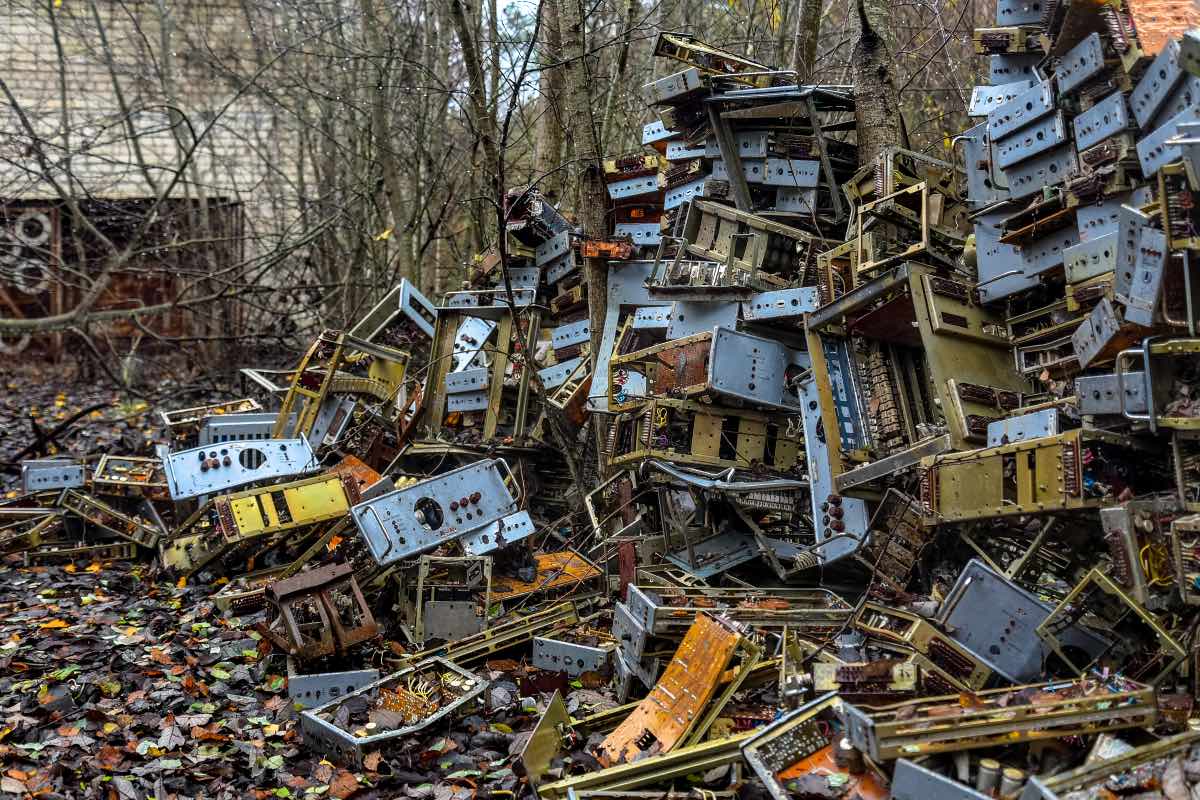
Tucked away in the Chernobyl Exclusion Zone, the Duga Radar is a massive mountain of Soviet steel that was once used to gather military intelligence. Standing at around fifty stories tall and over 1,500 feet wide, the structure is uncomfortably big and only recently became accessible to the public.
Constructed in 1976, the Duga was equipped with a radar transmission of 10 megawatts, which is powerful to say the least. The US would give Duga the nickname “The Russian Woodpecker” due to the incessant clicking it emitted for radio operators everywhere. It was designed to be able to detect incoming US missiles, but its signals were so powerful that they infiltrated radio signals everywhere to the frustration of many.
Today the Russian Woodpecker sits useful only to those looking to climb to the top for a thrill. Its massive size and close proximity to the nuclear reactor that caused the disaster at Chernobyl make it a haunting reminder of a different time.
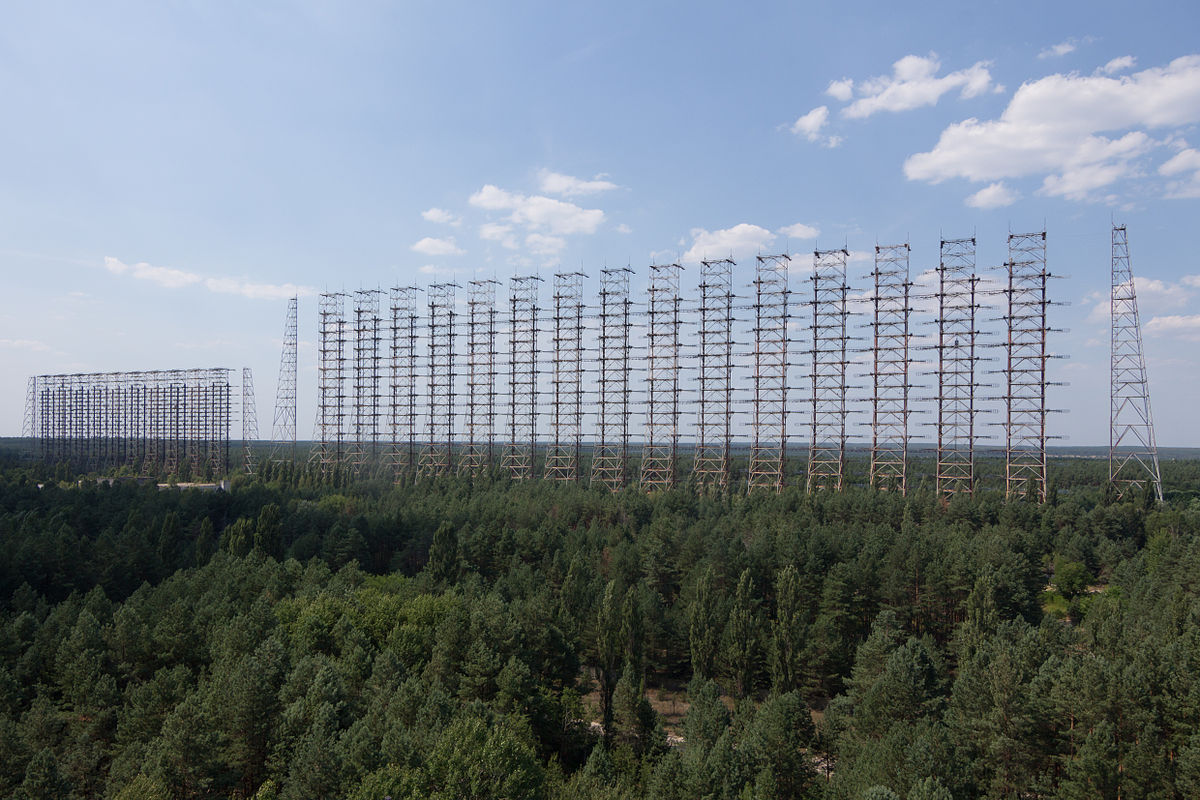
Balaklava Submarine Base, Ukraine
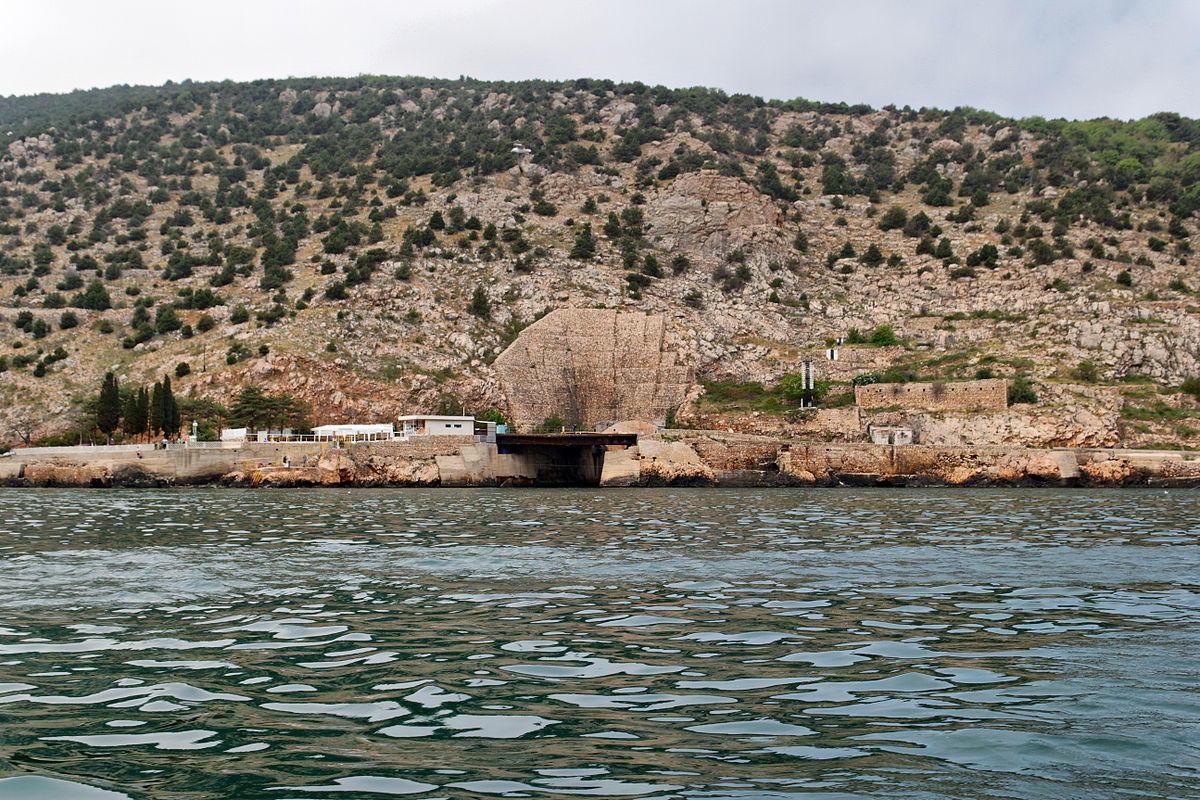
During WWII, Joseph Stalin decided the USSR needed a secretive place to hide submarines in the case of a nuclear strike from the US. They decided the most ideal location would be Balaklava, a small city on the edge of Crimea. Balaklava is tucked away in an inlet that provided protection from storms and was invisible from any angle from the sea. The base was completed in 1961 and included everything from repair shops and weapons warehouses, to a sophisticated water channel and nuclear weapons. It could also protect people in the event of a nuclear fall out. The base was active all the way until 1993 and the last submarine was removed from the facility in 1996. It then had a brief stint as a naval museum when it was gifted to the Ukrainian Navy.
Kalama Atoll
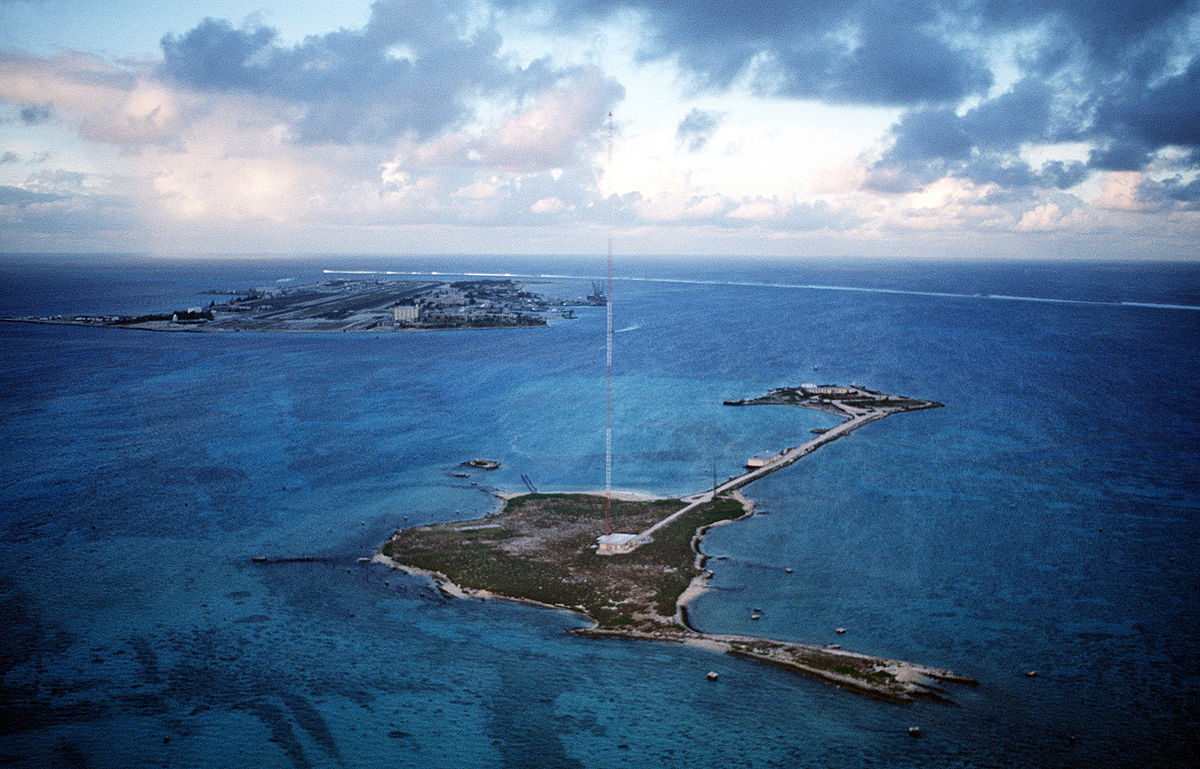
More commonly known as Johnston Atoll, this little island 825 miles Southwest of Hawaii was used by the US Military for a variety of purposes including an airbase, bird sanctuary, and navy refueling station over the years. Most notably, it was used by the United States Army Chemical Activity Pacific to handle, store, and destruct chemical weapons stockpiles. This unit along with contracted civilian group Johnston Atoll Chemical Disposal System, destroyed over 400,000 bombs, rockets, mines and other weapons without any incident of injury over the 30 years the project was active. Both nerve and blister agents were destroyed here and the last chemical stockpile was destroyed in 2000. Due to the highly dangerous chemicals contained on the island over the years, Johnston Atoll suffers from contamination and is continuously monitored to this day.
Fort Ord, California
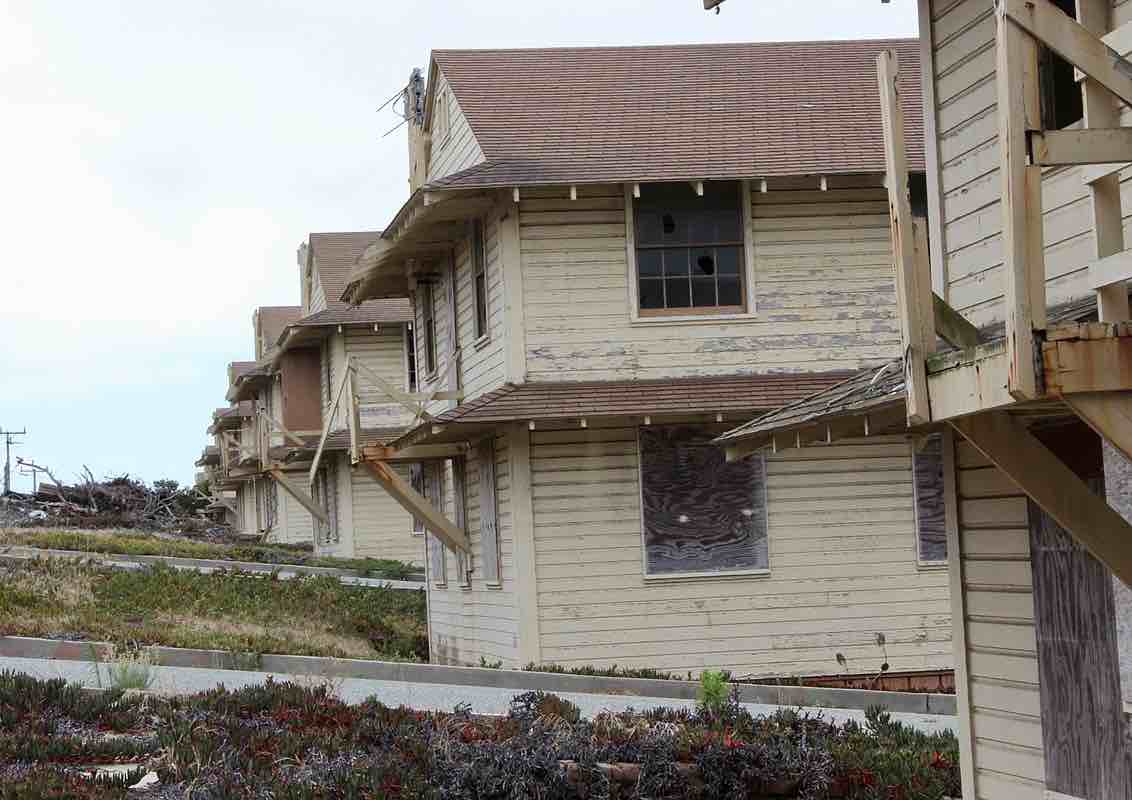
Fort Ord, California was a sprawling, 28,000-acre permanent United States military base dating all the way back to the Mexican-American war in the mid 1800s. The topography of the area made it ideal for use as a basic training facility for those in the service, and it was used that way throughout its operational years. Especially for the U.S. Army and U.S. Marine Corps. The base was very rural in nature due to the area being predominately agricultural until the 1930s. That’s when the extensive barracks, administrative buildings, sewage treatment plant as well as a long list of other permanent structures were constructed. In 1990, the Secretary of Defense called for reducing the number of military installations across the country and included Fort Ord as one of those to be closed. It was officially shut down in 1994. Most recently, President Obama established Fort Ord as a National Monument in 2012 stating that “the protection of the Fort Ord area will maintain its historical and cultural significance, attract tourists and recreationalists from near and far”.
RAF Hethel, U.K.
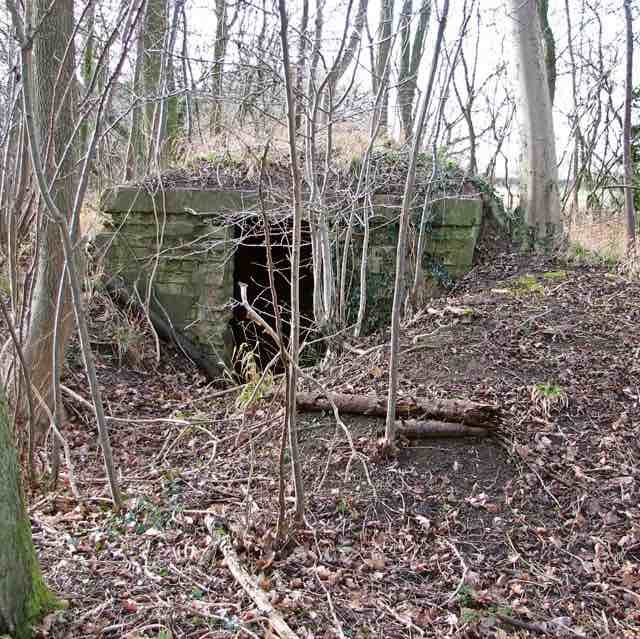
The Royal Air Force Hethel was created in the early 1940s and was used by both the Royal Air Force and the United States Army Air Forces (USAAF) against the Axis Forces during WWII. When used by the USAAF, units that occupied the station included the 320th Bombardment Group, the 310th Bombardment Group and the 389th Bombardment Group. The 320th and 310th Bombardment Groups both used the station as training and staging points for their respective missions. The 389th Bombardment Group was assigned to the 2nd Combat Bombardment Wing flying under the group tail code of “Circle-C”. The station was returned to the RAF in the mid 1940s and was used as Fighter Command until 1948. It was then inactive and essentially abandoned until the mid 1960s when British sports car manufacturer, Lotus Cars, moved into the space, developing the former air strips as testing tracks for their fast cars.
Carlstrom Field, Florida
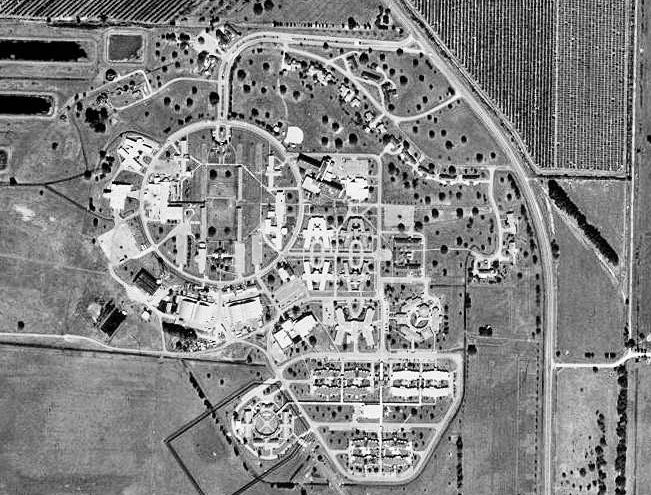
Carlstrom Field in Southwest Florida was first used for pilot training during World War I. It would again become an important flying school for pilots in the Second World War operated by Riddle Aeronautical Institute. During this time, Royal Air Force pilots were trained here and produced its first graduated class in 1941. Carlstrom was in fact named after British pilot, Victor Carlstrom, who was killed in an aircraft accident in Newport News, Virginia in the early 1900s. Twenty-three of these RAF cadets would parish during training, and they were laid to rest in Oak Ridge Cemetery in Arcadia where a ceremony is held in their memory every Memorial Day. Carlstrom went inactive after the war, and remained abandoned for a number of years. It was then purchased by the State of Florida and turned into G. Pierce Wood State Mental Hospital, using many of the original structures. The hospital was closed in the early 2000s.
Fort Tilden, New York
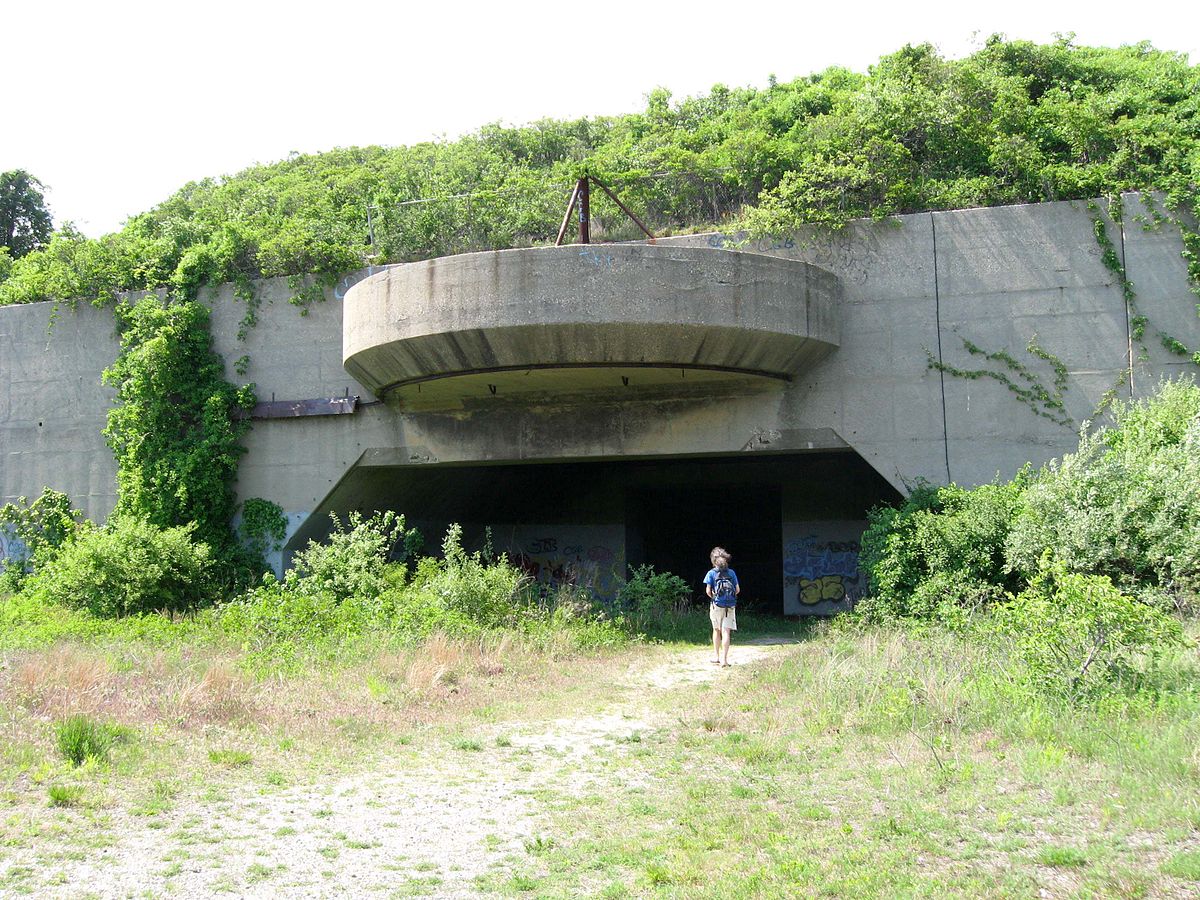
Fort Tilden, in the New York City borough of Queens, was built to protect the homeland from impending threats from enemy ships. Use of the site as a defense base dates back to the War or 1812 when temporary installations were put in place to fight the British. It wasn’t until World War I that a permanent base was put into place and still remains today. The base held cannons that could reach approaching ships. It was known for the two large cannons it held called the Battery Harris that could rotate 360 degrees and could launch cannons up to twenty-eight miles away.
With World War II approaching, the US poured concrete over Fort Tilden to protect the artillery inside from being bombed, as well as to make sure the weapons couldn’t be used on New York City should the enemy gain control of the Battery. Its last military use was in the 1970s and has since become listed on the National Register of Historic Places.
Devils Slide Military Bunker, San Mateo County, California
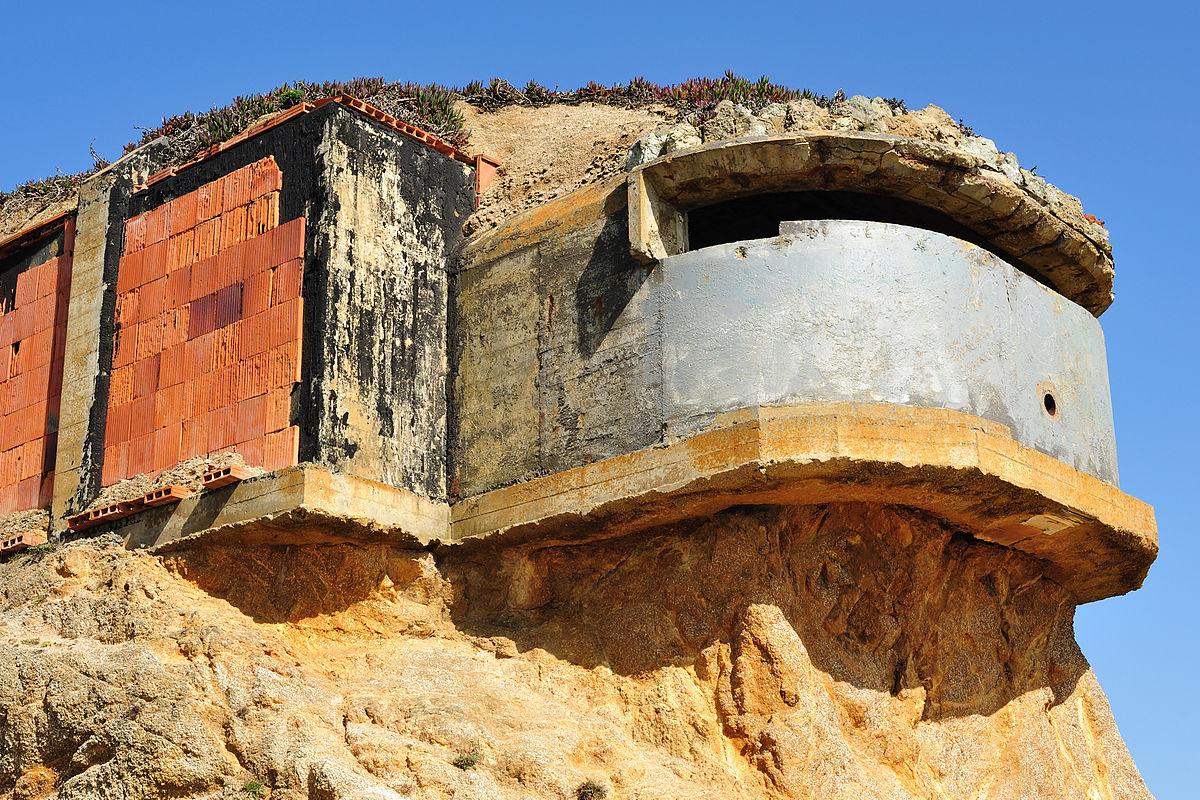
Perched atop a rocky cliff in San Mateo County, California, Devils Side military bunker is an eerie reminder of a time of war. It was the focal point of Little Devils Side Reservation which was one of the five fire control stations placed along the Pacific Coast. Also nearby were an air strip and radar tower fit with anti-aircraft weaponry, all part of an elaborate defense strategy against Japanese aggression. After the attack on Pearl Harbor, the urgency to get the San Francisco coastline ready for an attack was top priority. This possibility of impending attack brought the civilians of the Bay Area together and thousands of volunteers trained to become firefighters and air raid wardens. Although the attack never came, the steps taken to secure this important port is believed to have been a great deterrent. Devils Slide was purchased by a private buyer and much of the rock was excavated from around the structure leaving it exposed to the elements. The plans to develop the area fell through and it now stands covered in graffiti, still looking out onto the Pacific Ocean.
The Flak Towers, Germany
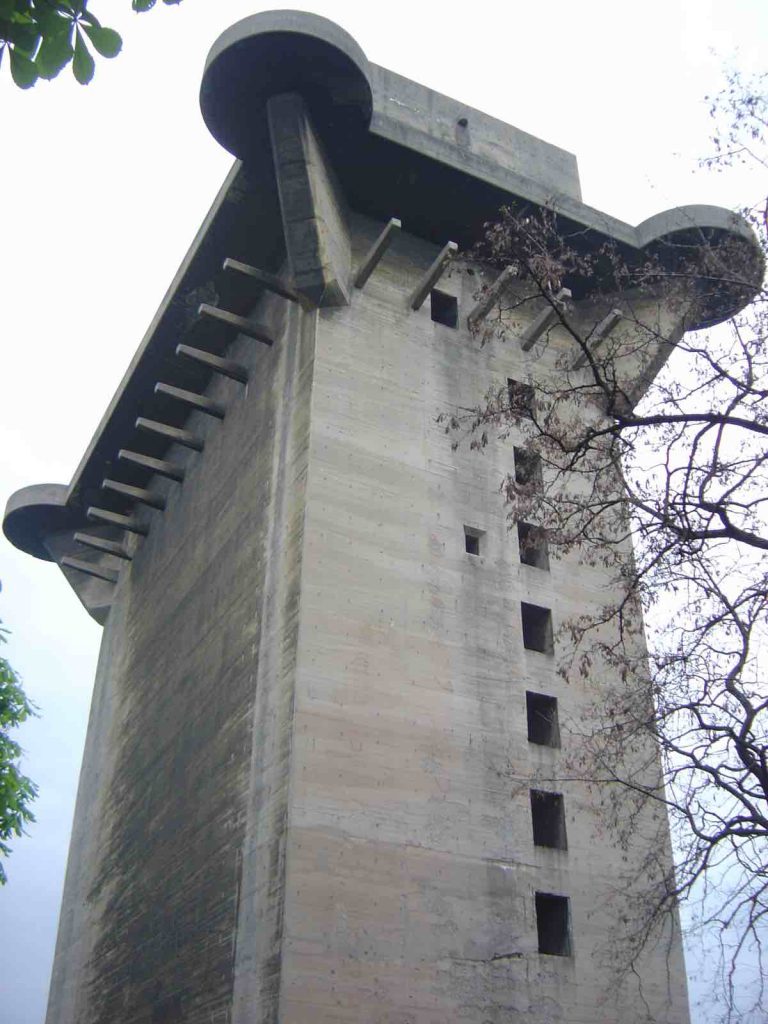
The Flak Towers are aggressive reminders of the Nazi Regime. They were built in response to the incessant air raids by the Royal Air Force specifically in Berlin. Hitler had a hand in designing these castle-like structures and they were built in Berlin, Austria and Hamburg. Construction of the massive structures posed some difficulty for the Regime but determined to succeed, the towers were completed within six months. The towers were seven stories tall and operated in pairs, one as the gun tower and the other as the command tower. They were armed with heavy battery of cannons and retractable radar dishes that could spot incoming air raids from 50 miles away. The Flak Towers also served as bomb shelters for civilians. The Flak Towers still stand today and the cities they stand in have had some issues deciding what to do with them. They are essentially indestructible and a stark reminder of a dark time in history.
Saint-Nazaire Submarine Base
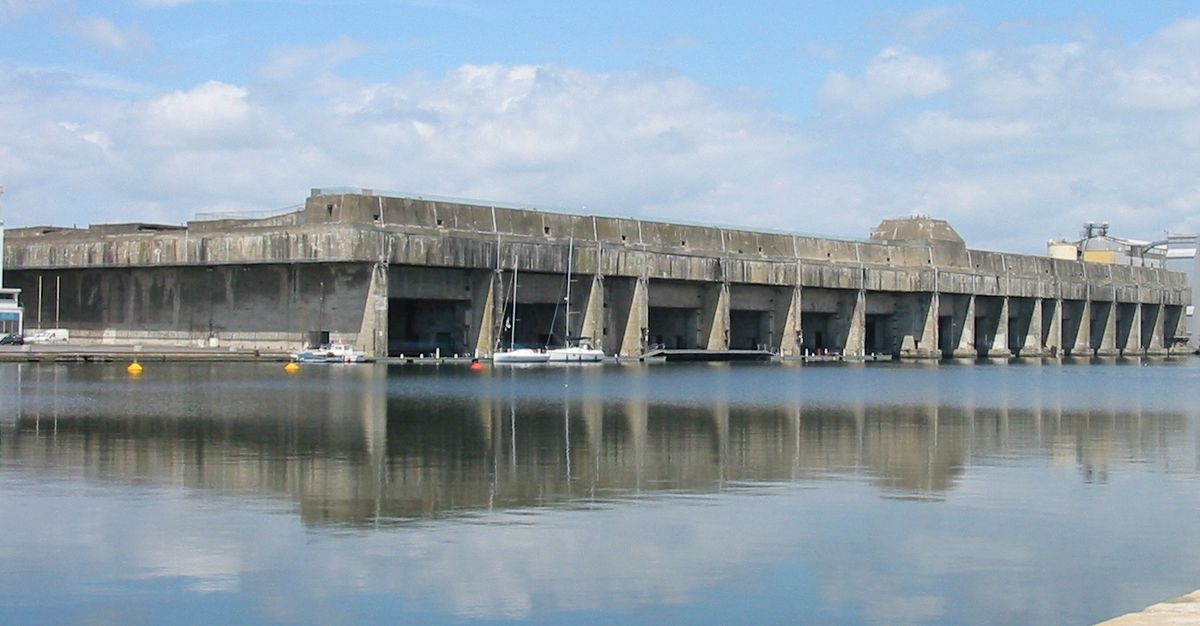
Realizing that the winner of World War II would be determined by the opponent with the superior Naval force, one of Germany’s top goals was to acquire and build indestructible bases on the coasts of their newly claimed territories. The Saint-Nazaire Submarine Base is one of these incredibly engineered military bases located on the coast of France. The Germans began constructing it in 1941 with the help of several thousand workmen and by the end of 1942, it was complete. It housed two U-Boat fleets which were mainly used to destroy commerce ships (commerce war) rather than engaging in battle, as well as dozens of torpedo workshops, and comforts a full service military base might have. The base was virtually indestructible, as the German’s had hoped, and was the target of many Allied attacks. It still stands today, too expensive to destroy, and has become a part of the Saint-Nazaire civilian landscape.
Greenbrier Bunker, West Virginia
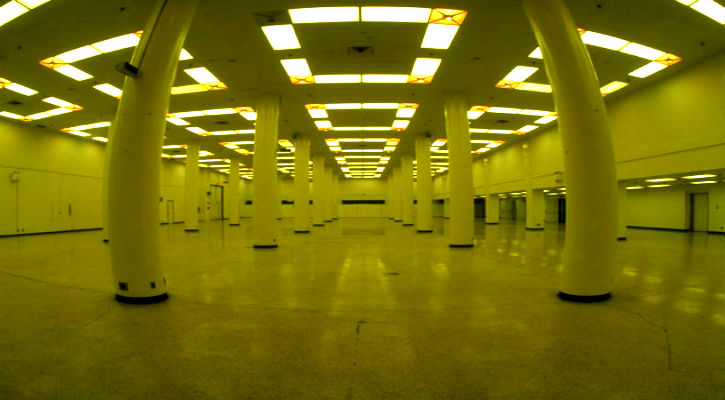
The story of the Greenbrier Bunker sounds like something out of a movie, but as they say, reality is truly stranger than fiction. The Greenbrier Resort, located on a beautiful hillside in White Sulphur Springs, West Virginia, is one of America’s most famous luxury resorts. It is directly below this that a massive government bomb bunker was built in secrecy per the orders of President Dwight Eisenhower under the moniker “Project Greek Island.” The bunker was to be capable of holding all 1,100 members of the House and Senate should nuclear war breakout in America. The bunker was built right under the nose of the well-to-do patrons of the luxury resort, with three foot thick concrete walls and rows of metal bunkbeds for those who would inhabit it if the government’s fears were to become reality. One room was used regularly as a “conference room” for the hotel, but was actually the “Exhibit Hall” for the bunker. The bunker was exposed by the Washington Post in 1992, and part of it now is open to tourists.
Abandoned Military Bases – RAF Stenigot, Lincolnshire, England
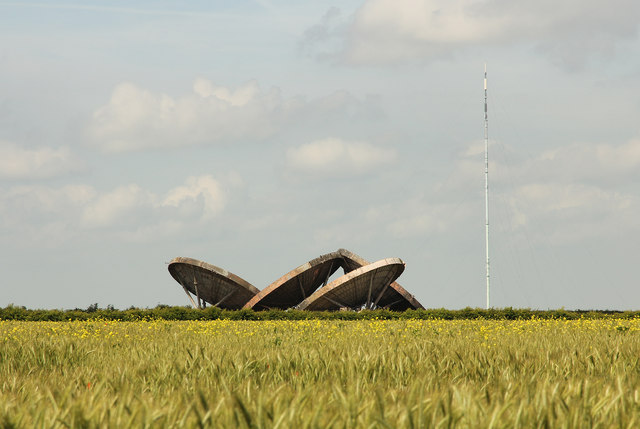
The Royal Air Force (RAF) Stenigot Radar Station in Lincolnshire, England was constructed in 1938 as a part of a string of early warning radar networks known as the “Chain Home” network that would function in different capacities throughout several wars. Although the most interesting structures remaining today are the gigantic rusting radar dishes, they are not original to the station. Prior to the arrival of the dishes, the station consisted of eight aerial towers for receiving and transmitting radar signals to protect against German air raids.
The parabolic dishes were brought in after World War II was over and the station was converted to an early warning system to protect agains a new enemy: the Russians. The 60 foot wide dishes would replace the existing ariel towers and the station would join a new network known as “ACE High” (Allied Command Europe). Despite performing well, the site was decommissioned and then essentially demolished in 1996. There are still some structures remaining, including the massive dishes which have been allowed to rust away in a field nearby.
Check out 20 Chilling Quotes From Trenches Of WWI.

